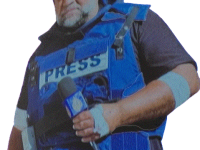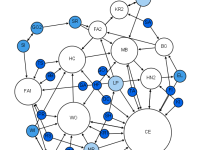NewTech. Super high-speed internet delivered over the air isn’t as crazy as it sounds

STAR. Millimeter wave technology has been a tantalizing prospect for decades
This week, a new startup, Starry, announced it would bring gigabit-speed internet access to consumers, without data caps, at a price that is equal or less than your average broadband plan. It also announced that it would do this without ripping up the ground to lay expensive fiber cables or asking local governments for construction permits. It would beam the signals over the air.
It was a shocking promise. For nearly all consumers, internet access over the air tops out with 4G LTE speeds. Of course there is Wi-Fi, but that is just a short-range extension of a wireline connection. Even experimental attempts to send internet by drone and balloon never do better than a 4G connection. Is it really possible that this company has made the leap from that to gigabit speeds or better?
THE TECH HAS WORKED FOR DECADES, BUT WITH BIG LIMITATIONS
As it turns out, the technology they are using, millimeter waves, has been achieving this kind of speed over the air for years. As far back as 1997 startups were raising money with the promise of using it to deliver wireless broadband internet service. But the wave of companies that rose during the dot-com boom largely perished because of technical hurdles and an unsustainable business model. The question for Starry is, has the technology improved enough in the last two decades to compete with wireline broadband in terms of reliability, and has the customer base for broadband expanded enough for the business model to flourish.
« There has been a lot of development recently in the millimeter wave space. At a high level, getting gigabit per second throughput is certainly possible. The only difficulty is that you have to locate the transmitter suitably close, » says Sundeep Rangan, an associate professor of electrical engineering at New York University who specializes in wireless communications. As part of the NYU Wireless project, a team of academics made a number of extensive measurements in a dense urban environment trying to emulate transmission for cellular type applications with millimeter waves, similar to those proposed by Starry. « We could serve people up to 200 meters away at high speeds, even without direct line of sight. It was quite remarkable. »
WEATHER CAN HAVE A BIG IMPACT ON MILLIMETER WAVE TRANSMISSIONS
The problem is that 200 meters is just a fraction of the range promised by Starry, which is claiming its technology can deliver a fast, reliable signal to homes up to 2 kilometers away. The greater the range, the fewer base stations are needed to reach a critical mass of customers. « The business case is going to be a little challenging, » says Rangan. He believes that, at the ranges achieved by NYU, Starry would need to do a massive deployment, similar to the density currently achieved by companies like Verizon and AT&T. « That can only become economically viable when you have a large number of customers. »
Several other experts expressed doubt that Starry could achieve the range it claimed. « In terms of phased-arrays, yes, one can build them if they know what they are doing. It is hard, and it is expensive, but it is possible. We have proved it at UCSD and established 1-2 Gbps over 200 meters with Keysight, » said Gabriel Rebeiz, a professor of electrical and computer engineering at UC San Diego who is attempting to commercialize his research into millimeter waves through a company called Keysight. « A range of 1.5kms is problematic. If they have said 300-500 meters, it would be much more realistic under all weather and humidity conditions. »
Millimeter waves can be scattered by things like fog, rain, and snow, harming their performance as a means for reliably transmitting data. The greater the distance the waves have to travel, the bigger the impact of these environmental factors. « Two hundred meters is possible, but that’s under pretty good propagation characteristics. Once you get things like rain, it becomes much worse, » says Jonathan Wells, a wireless industry consultant who has authored books on millimeter wave technology. « If you’re at a kilometer, you’re at five times the distance, so you get five times the effect, which will cut down your signal. »
MILLIMETER WAVE TECHNOLOGY IS POISED TO PLAY A BIG ROLE IN 5G MOBILE NETWORKS
Wells points out that attempts to use millimeter waves for wireless communication actually had a spike during the early 2000s. « This was all proposed 15-20 years ago. There was a technology called LMDS which worked at the millimeter wave frequency. There were lots of companies that started up in late 1990s or early 2000s and raised tons of money to build direct connections to buildings. None of them worked out. They all died. » Most of these companies went bankrupt or were acquired for pennies on the dollar. « Now certainly things have changed in the last 15 years. But this model is not new. They may have some new technology, but the business model is not new. »
During its presentation yesterday Starry acknowledged all these challenges. It didn’t pretend that others were wrong to assume millimeter wave had these issues, but it claimed to have created breakthrough technology which solves them. Starry does have a lot of experience securing rooftop access and building fancy antennas from their prior venture, Aereo. As for the business model, Starry is banking on the idea that the density of consumers who want broadband internet access in urban areas will soon rival that of cellular connections, creating a market where it makes sense to deploy a huge number of base stations.
Whether or not Starry pans out, we may all be seeing a lot more of this technology in the near future. « There is a lot of work right now in the commercial space developing 5G cellphones, » said Prof. Rangan from NYU Wireless. « And millimeter wave will likely be a component of that. »










